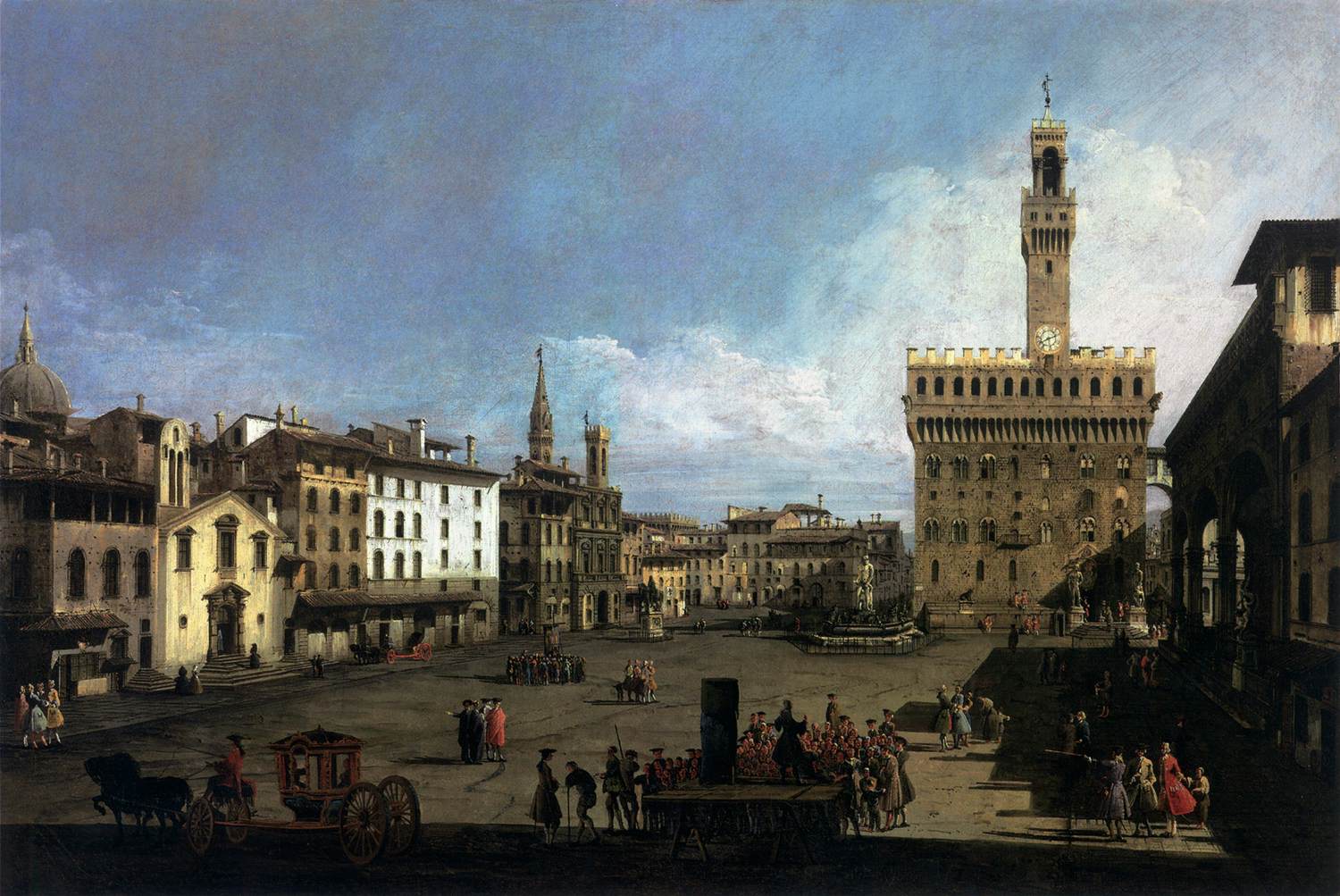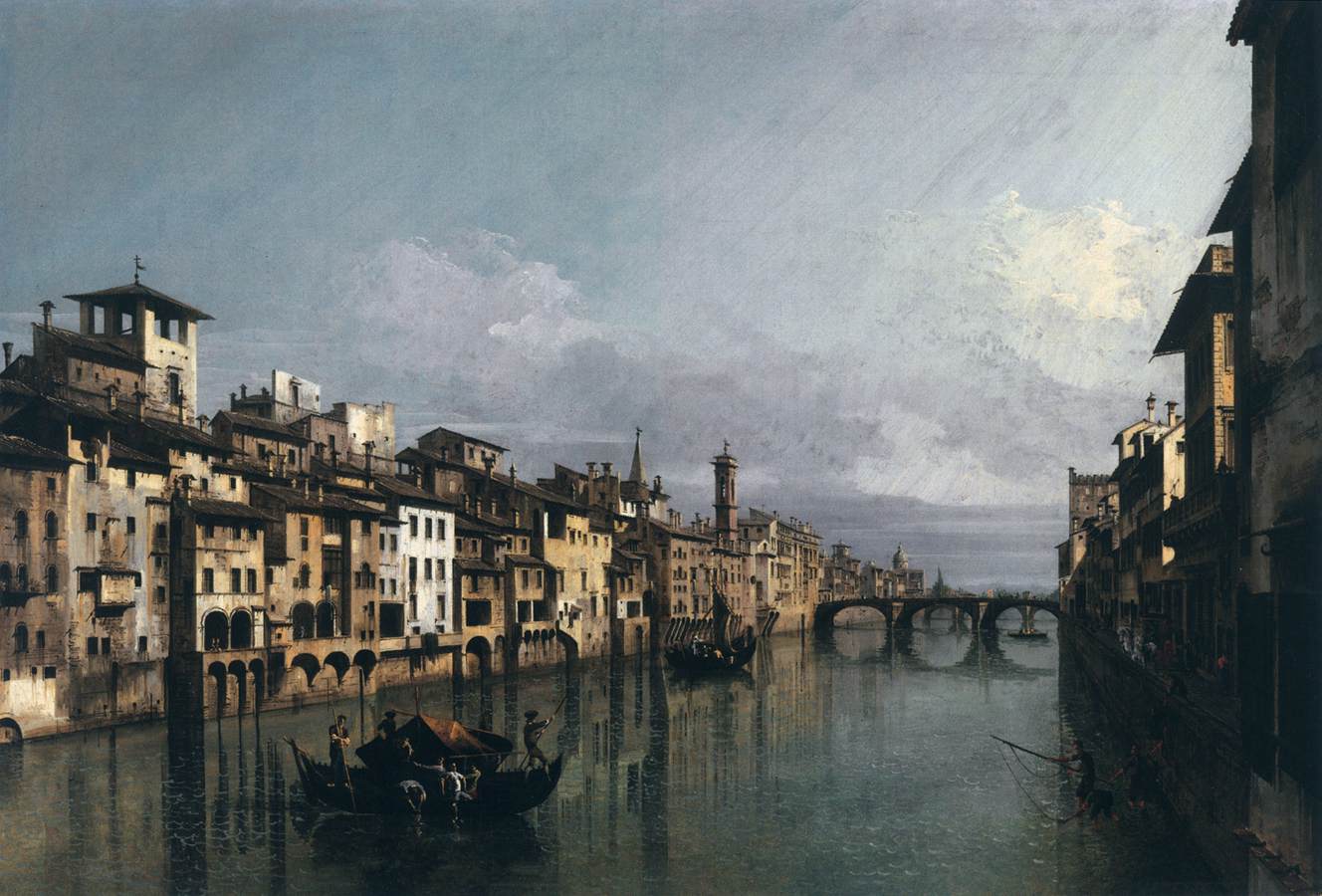Italian painter, nephew, pupil, and assistant of Canaletto (Antonio Canal) in Venice.
At about the age of fourteen he entered the service of his uncle Canaletto as a student. In 1742 Bernardo left to spend some time in Rome, just as his uncle Antonio had done at the same age, and apparently with the same goal: to study architectural and topographical painting at the place where the best practitioners had lived, or at any rate where they had worked. A year later he returned to Venice, by way of Florence. In the archives of the Venetian guild Bellotto is mentioned for the last time in 1743.
We can be certain that Bellotto worked closely together with his uncle during his last years in Venice. In a number of paintings of about 1740 from Canaletto's workshop Bellotto's hand can be recognized with a reasonable degree of certainty in stylistic idiosyncrasies which were to become increasingly characteristic of his work. Almost doubtlessly, other canvases were painted by Canaletto after composition drawings by Bellotto.
As an independent artist, however, Bellotto comes most clearly to the fore in two pairs of paintings from 1744 and 1745, which represent the village of Gazzada near Varese and the ramparts of Turin, respectively. Even aside from the motifs, which are completely different from those of Canaletto, it is especially the use of colour that one notices: not the light, clear pastel colours of Canaletto's middle period, but rather saturated greens and browns, and a good deal of shadow, against skies which can be of a very cool blue.
Bellotto left Italy for good in 1747, to spend the rest of his life working at various European courts, notably Dresden and Warsaw, where he died. He called himself Canaletto, and this caused confusion (perhaps deliberate) between his work and his uncle's, particularly in views of Venice.
He worked in Dresden for eleven years as court painter to the elector-king August III of Saxony and Poland. He was commissioned by August III to paint three series of large-sized canvases - twenty-nine in all - with scenes of the cities of Dresden and Pirna and of the fortresses Sonnenstein and Königstein. These canvases, most of them almost two and a half metres wide, were to be hung in the royal painting gallery in the Stallhof. In addition he painted a similar series, though of more modest dimensions, for the courtier Count Brühl, and a number of even smaller ones for various other private individuals.
It was in Dresden that Bellotto's style finally was fully developed. It is characterized by the greatest possible topographical precision, complete control of light and mathematical perspective, and a consequent pursuit of clarity and organization. Not surprisingly, Bellotto's work shows no trace of the virtuosity with which his uncle would dash figures and other details onto the canvas. His brushwork is unhurried and descriptive, almost severe, and in his use of colours he constantly seems to be seeking to reproduce precisely the hues he had observed in the open air. Yet the most remarkable feature of Bellotto's work is his handling of light. He seems not to be occupied with atmospheric perspective; an almost unreal clarity and calm pervades his canvases, and the link which has been suggested between these features and the ideals of the enlightened despots for whom he worked may not be far from the mark.
In 1758 Bellotto fled from the violence of the Seven Years War to Vienna, where he entered the services of Empress Maria Theresia for three years. For her and her courtiers he also painted a series of large canvases with cityscapes and views of imperial and princely residences, but most of the canvases produced during this period were intended to embellish the imperial palaces. Perhaps this is why the views of residences are expressive of a taste for decor and theatre much more than the Dresden canvases.
Toward the end of the war Bellotto returned to Dresden, the city he knew so well, by way of Munich. But there was no longer any place for court painters in the capital of Saxony. The city had suffered terribly, the prince was impoverished and in artistic matters the lay members of the recently founded Akademie held sway, who espoused classical ideals rather than the realism preferred by the royal house. Bellotto adjusted. He painted two more views, both of the ruins, one of which was actually purchased by the Akademie, and also produced architectural fantasies in classicist style.
As soon as he could, however, Bellotto left Dresden, finding himself eventually in Warsaw, where he settled and continued to work from 1767 until his death in 1780. Here he was at the court of an enlightened prince once more, this time King Stanislaus Poniatowski. As August III had done in Dresden, this prince was attempting to create a modern Western European cultural climate in Poland, along Italian lines. Besides many palace decorations and a series of Roman townscapes Bellotto again painted in Warsaw a series of topographical views of the large size he had used earlier: twenty views of Warsaw itself and four of Wilanow Palace. Virtually the entire series decorates the 'Canaletto Hall' in Warsaw's Royal Palace.
In marked contrast to Canaletto, who worked largely for the tourist market, virtually all Bellotto's paintings were intended for royal residences and galleries. It is very likely for this reason that, whereas Canaletto's oeuvre attracted a hoard of imitators and followers, Bellotto remained a relatively isolated figure in the history of art, whose work was only slowly discovered, recognized and distinguished from that of the other Canaletto in the course of the 20th century.
Bellotto's style is distinguished from his uncle's by an almost Dutch interest in massed clouds, cast shadows, and rich foliage. His colouring is also generally more sombre, much of his work being characterized by a steely grey. The best collections of his work are in Dresden (Gemäldegalerie) and Warsaw (National Museum). In the rebuilding of Warsaw after the Second World War his pictures were used as guides, even in the reconstruction of architectural ornament.
//
![]()









